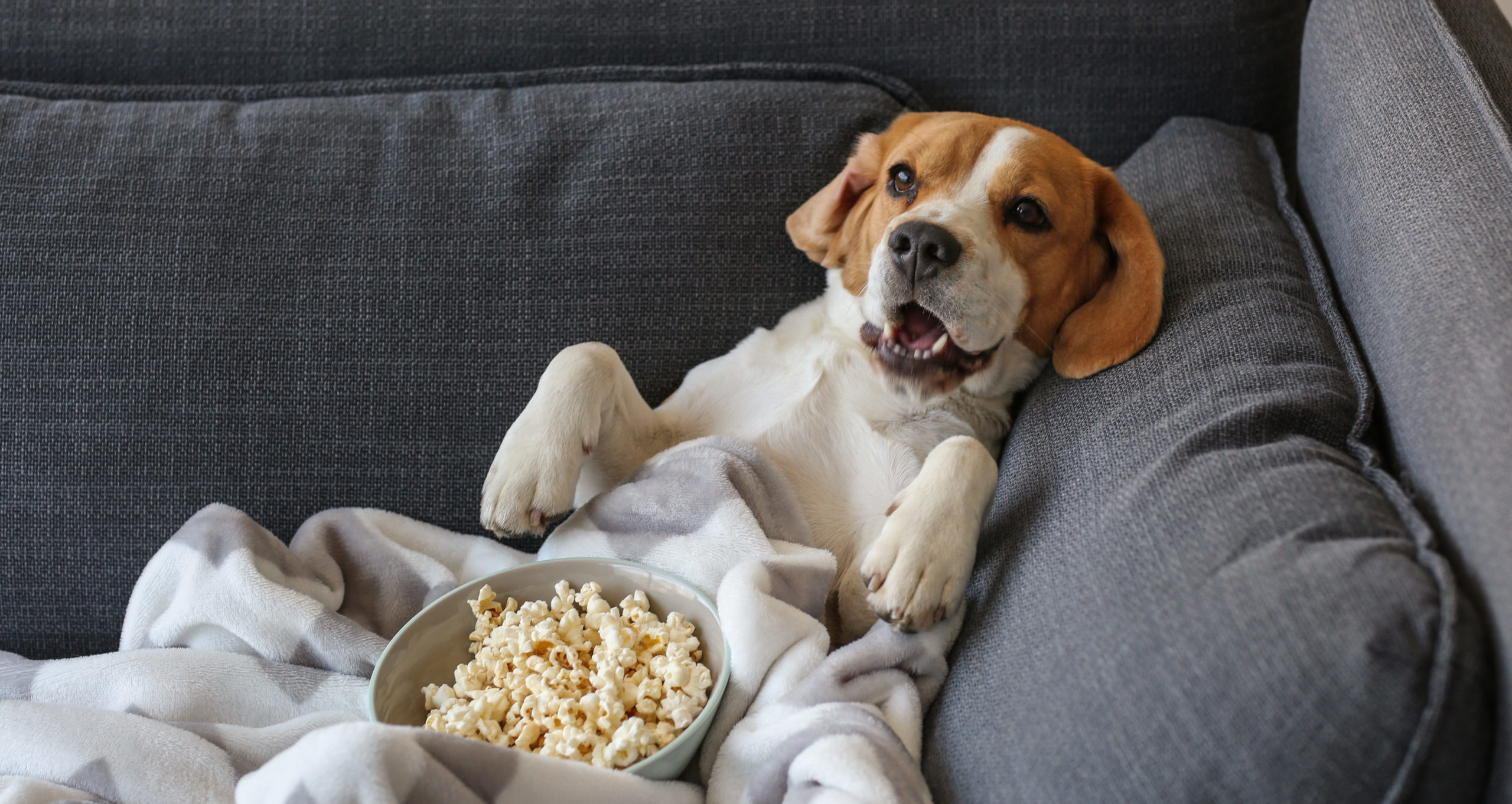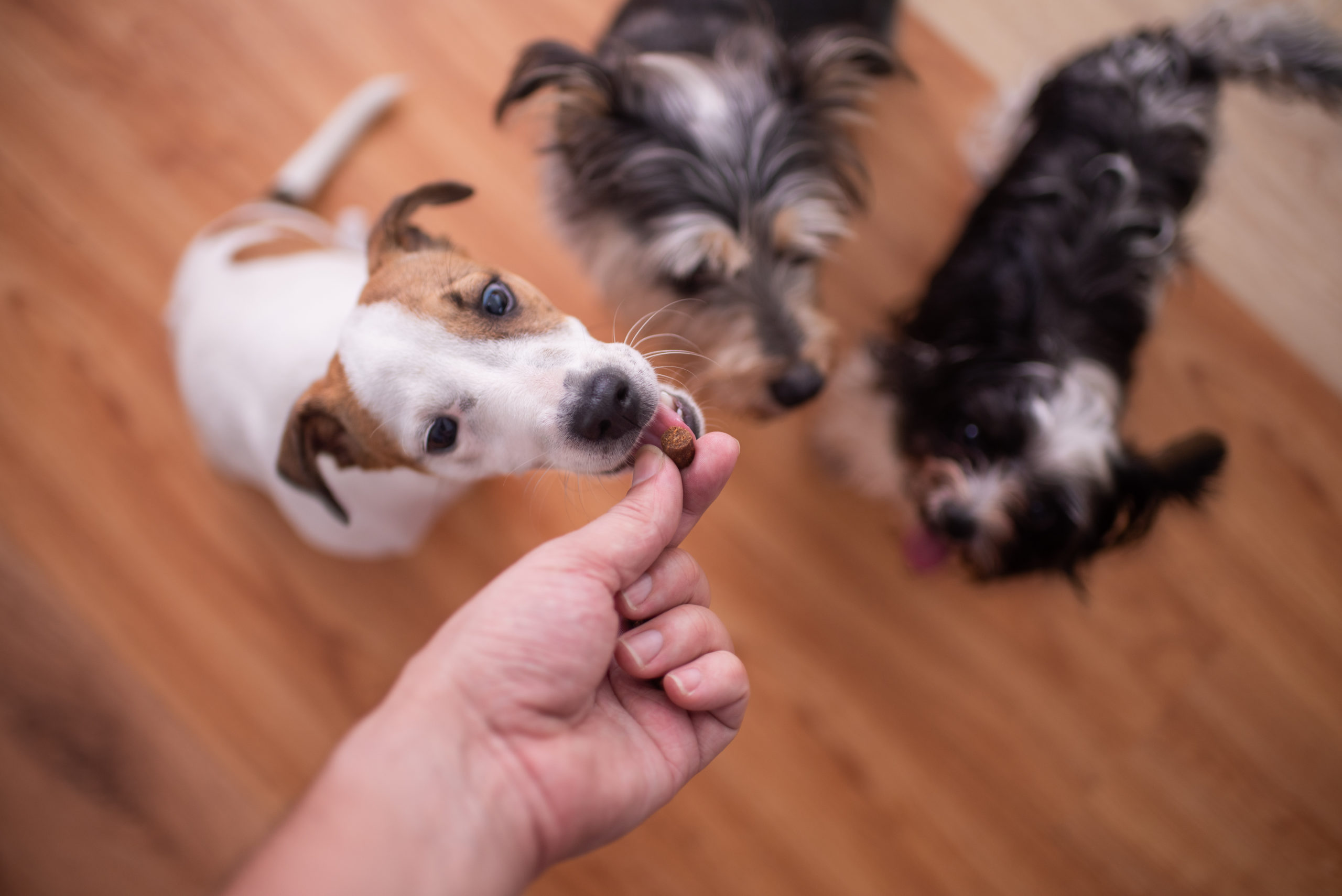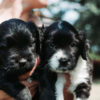Written by Halo Pets' Vet Consultant, Dr. Sarah Dodd
So, now we know how many calories we can give, but where can those calories come from? It’s important to remember that dogs aren’t humans. That may seem basic, but the reason this is important is that not everything that is good for us is good for them, or even safe for them! Secondly, their nutritional requirements are really quite different from ours. For example, they have a higher dietary requirement for protein, calcium and vitamin D, and they have a lower tolerance for fat. That being said, there are plenty of “people foods” that are safe and appropriate to use as treats and snacks.

Great “people food” options for dog treats are fruits and vegetables, as these are high in water (meaning the calories are diluted), high in fiber (keeping dogs fuller for longer), and low in fat. In comparison, foods like peanut butter, eggs, cheese or meat scraps are more energy-dense and can be quite fatty, which can be problematic for some dogs. Again, let’s recall our imaginary, perfectly average 45lb dog – the table below names some common dog-friendly “people” foods, their calorie content, and how much you could give our 45lb dog per day without unbalancing their diet.
Of course, in addition to the main diet, many pet parents love to give treats, snacks, and scraps for a variety of reasons including training rewards, boredom busters, and to bump up that human-animal bond. However, there are a few considerations to keep in mind when we’re looking at offering “people food” to dogs.
Firstly, to avoid unbalancing their diet, make sure no more than 10% of your dog’s daily caloric intake comes from snacks/treats/scraps. There’s a handy chart below that shows for a given size of adult dog, what an average appropriate daily caloric intake would be and how many calories can come from treats and snacks. Bear in mind that everything your dog eats, including treats, must be accounted for as part of their daily calories and adjusted appropriately.
How Much Peanut Butter is Too Much Peanut Butter?
Or, How Much of These Human Foods Should Your Dog Eat?

*This chart is based purely on calories; in the case of underlying disease conditions, not all foods will be suitable. Consult your Vet for recommendations specific to your dog.
Now, maybe even more important than knowing what your dog can eat is knowing what your dog can’t eat. Thankfully, there are excellent resources like ASPCA Animal Poison Control who have extensive resources and a helpline to call in the event that your dog eats something and you don’t know if it is poisonous or not, or what to do.
- Alcohol
- Caffeine (coffee, tea, chocolate)
- Chocolate
- Grapes and raisins
- Macadamia nuts
- Dairy products
- Onions and garlic
- Raw meat and animal products
- Salty foods
- Xylitol
- Uncooked rice
- Yeast dough
While this information may seem overwhelming, adapting to life with a furry family member is often smooth, simple, and incredibly rewarding. And remember: you’ll always have a resource in your family veterinarian, who will be happy to answer questions about what should and should not be fed to dogs and guide you in finding the best food for your companion.









